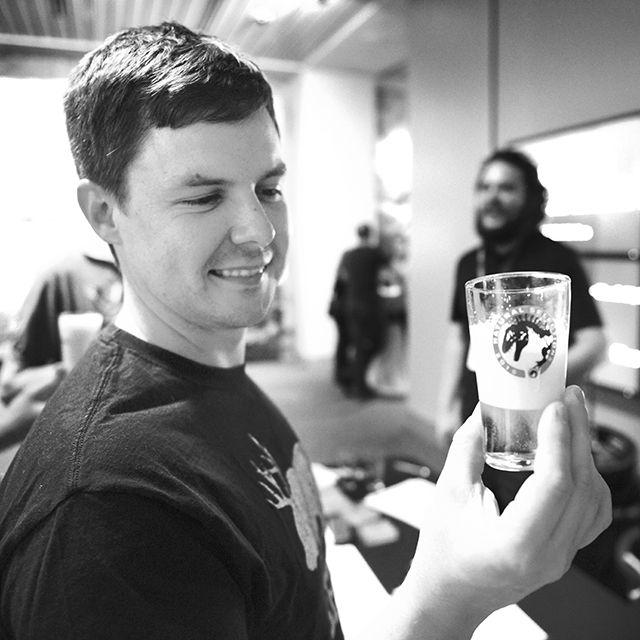Craft beer enthusiasts showed up in crowds to sample local creations brewed in North Carolina. Tasters got an educational introduction to the science behind their favorite flavors at the Natural Selections beer tasting at the North Carolina Museum of Natural History on Friday.
Seventeen breweries set up taps featuring ale and a lager for participants to sample.
For a craft beer layman like myself, understanding what was meant by terms like “hoppiness,” “strength” and “smoothness” as it relates to beer was challenging, so I enlisted the help of Sam Loomis, a senior double-majoring in mathematics and physics, and his father, Dave Loomis, a software architect who reviews beer for a friend who is trying to break into the business and has made his own in the past.
We made our way to the Crank Arm Brewing Company’s table, which operates in the warehouse district in downtown Raleigh. It was recommended that we try the lager. This one was a shock to my system, because I had never seen beer as dark and as flat as Coca-Cola, and I didn’t know that a beer could taste so strongly of mint chocolate that it almost veered into chilled coffee range.
As a more experienced drinker, Loomis found Crank Arm’s lager to be “smooth, not too bitter and not too sweet.” To make it easy for me, Loomis said that the taste, on a scale from Natural Light — being the most basic form of drinkable alcohol — to Guinness, was much closer to Guinness.
In his only attempt at brewing his own beer, the elder Loomis bought a kit for about $30, which allows you to make beer on your stove at home, though it did not end well. Loomis said it was “basically orange juice.” If he were to try again, Loomis said he would buy a recipe and keep trying until he made something respectable.
After trying out a few more beers, I wandered into a panel discussion on beer styles with three professional brew masters: Eric Wagner from Brueprint Brewing Co., Derek Garman from Fortnight Brewing Co. and Chris Davis from Big Boss Brewing Co. who talked about some of the general trends they are seeing within the craft brew community.
“We’ve seen a lot of IPAs,” Wagner said. IPAs, or India pale ales, are distinguished by being “hoppier” than other beers.
“People are shoving hops into everything they can,” Wagner said.
Davis said that when he thinks about what he wants to brew, it’s impossible to make everyone happy.
“I brew for myself first,” Davis said. “If people like it, that’s great. We look at what people are drinking, and then I’ll go out and buy beer from everywhere — I consider that market research, a tax write-off — and then we try to make what we want to drink.”
Garman joked about the trend of seasonal beers, which are apparently the “Christmas album” of the craft beer world. Garman said that the best advice for hobbyists is to “get your process down by brewing the same recipe over, and over and over.”
One of the breweries represented was NC State’s Sheppard Brewing Lab who, instead of simply giving out samples, gave participants the chance to test their ability to detect differences in yeast by giving them two mystery beers and having them guess which was ale and which was a lager. I guessed correctly that Beer A was a lager, but only by luck.
“We made a blonde recipe once the wort was sterile and hopped post-boil; then we transferred the wort to a different fermentor,” said Thomas Clawson, a graduate student studying food science who was working the Sheppard Brewery table. “One was inoculated with a bohemian pilsner yeast, and the difference is a fruity taste versus a crisp-clean taste.”
There was a big crowd trying too hard to taste the subtle differences in Beer A and Beer B. Within that crowd was Owen Jones, a 2007 alumnus who now works at the new record-breaking beer-hub in downtown Raleigh, the Raleigh Beer Garden. After graduation, Jones moved to Wyoming for work and missed out on the craft beer explosion that took place after the Pop the Cap initiative in 2005 which did away with the 6 percent alcohol cap on beers in North Carolina, allowing a whole new range of styles to break out.
“I’m trying to get caught up,” Jones said.








